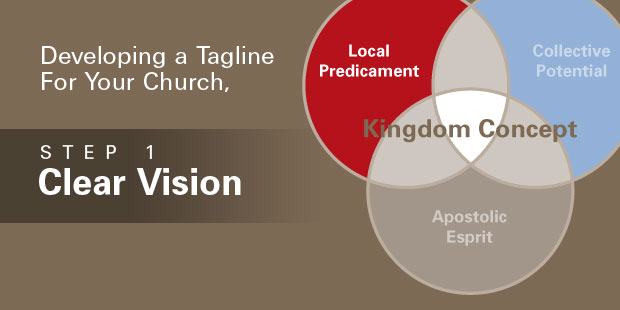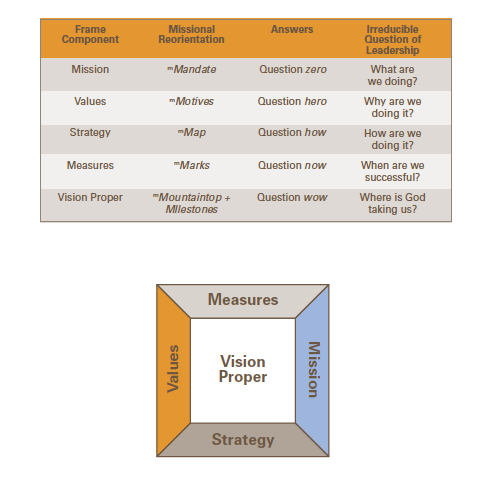
What’s the Deal with the Church Growth Movement, Part 2
As I continue my series about the Church Growth Movement I want to look at three ways the Church Growth Movement evolved. As I said previously, it is easy to take issue with something that was birthed in the 60’s (Volkswagen vans and the Beatles were not all bad). But the misapplication of the principles always happens when you get beyond the headwaters of a movement. Although the Church Growth Movement was well intended, all the results have not been good. Here are three ways the Church Growth Movement evolved that was not helpful to mission of God in North America.
1) Americanization of the Movement – When the movement became americanized, there were consequences. Some Church Growth leaders sounded like sales consultants. Some reminded me of greatest pitchman in history, the late Billy Mayes. I see him swinging his arms passionately, in his blue denim shirt, pitching the power of Oxiclean. A money back guarantee was included, of course. Some (certainly not all) Church Growth leaders, as with good pitchmen, address a pain point. The pain point that birthed the Church Growth Movement was “Are you tired of the lack of results at growing your church in spite of your best efforts?” The answer, it appears, was better plans.
To be honest, we Americans are guilty of turning anything good into a business. The Church Growth movement is no exception. In The Church Between Gospel and Culture, Richard Halverson wrote, “When the Greeks got the gospel they turned it into a philosophy, when the Romans got it they turned it into a government, when the Europeans got it they turned it into a culture; when the Americans got it they turned it into an enterprise.” An unfortunate by-product of the Church Growth Movement is that growing God’s church can be as simple as 1-2-3 with guaranteed results. I call it methodological mania. Some in the Church Growth Movement lost their way when they became more driven by methodological mania than by a central focus on mission.
2) A New Kind of Mission Station Mentality – I have heard the church called a mission outpost in a positive sense. I agree the church is a mission outpost if you are describing a place from which missionaries are sent across the street and around the world. But McGavran took issue with an approach to the mission of God that resulted in missionary isolationism. Another unintended dark side of Church Growth is that it produced another mission station mentality. Our best hopes focused on making the church so attractive that even a lost person would want to come inside to discover Jesus. What happened however, for the most part, is that we made the church become a great place to be for Christians or a “warehousing effect.” With all our best intentions we must guard against, yes, that’s right, guard against making our church “the place to be.” We must avoid “come and see” mentality that tempts our people to “do life” at church 24/7.
The church can never become the place where I live, work, and play. My neighborhood is where real people live. I am not sent by God to a church facility, ever how convenient and impressive it may be. I am sent away from the church gathered to my tribe and household with the Good News of the Gospel. That is where transformational movements take place that engage every man, woman, and child with the Gospel. So, too many in church growth focused on the barn, rather than how we might live on mission among the white fields. When focusing too much on the barn, we sometimes forget that the wheat will not harvest itself.
3) A Sociological Phenomenon – Much of Church Growth theory was based on sociology– and sociology is not a bad thing. We use sociology in missiology because we can understand social structures. For example, in missiology, we understand the sociological realities of the people are are trying to reach. We know, for example, that some cultures see family in a certain way and we take that into account.
Thus, the focus became (at times) focused on using sociological tools and realities to reach people. As such, evangelism was mistakenly depersonalized by making it the responsibility of the institutional church as it engaged its society rather than individuals who were reaching and serving others. Bricks, mortar, and programs do not take away my responsibility to be a living epistle in my neighborhood through word and deed. The end result was, as I see it, too much sociology and not enough focus on the mission itself.
Now, it is important to note that all three of these problems were caused, in some ways, by reactions to the issues before them. For example, I believe that the missio dei movement (1950-1970) gave birth to the Church Growth Movement (1960-1990) which gave birth a the missional church movement (1990-today). Though I do not have the space here to unpack that all here, I think it is important to note that most of the Church Growth proponents, were asking questions about how best to reach more people for Jesus when many in the mainline traditions had lost that focus (when the missio dei became so overwhelmingly focused on societal transformation– see an earlier blog post here).
In my next post I will conclude my series by telling you how the Kingdom of God has gained because of the Church Growth Movement.
Read Part 1 of this series here; read Part 3 here.
Read more from Ed here.

Tags: Church Growth, Ed Stetzer, Vision Frame































